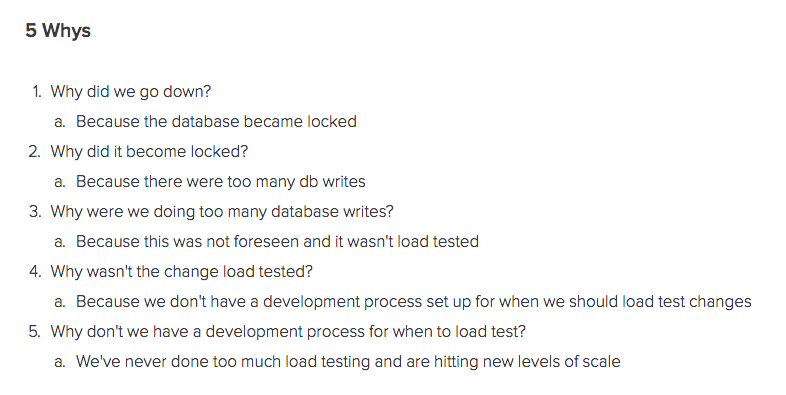Product managers are taught to say no. They are constantly inundated with requests from sales, executives, customers and the market. Developing an effective product strategy means saying no more often than yes. Des Traynor at Intercom says that delivering a cohesive product with well defined parameters requires PMs to make tough calls, including saying no.
When you’re afraid to make hard decisions, you fall back on appealing to the unknown, and therefore building everything.
Des Traynor at Intercom
And when you build everything, you end up with a product that’s confusing and helpful for no one.
So how do you get them to say yes…when the word on the tip of their tongue is a big fat no? In this article, we dive into the most common reasons product teams give for not acting on the feedback from customer support and how you can overcome their objections when appropriate.
Contents
Communicating customer feedback to product teams
The strategy you use to present customer feedback depends on the objection that the product team brings to the table. The most compelling presentation will depend on what your product manager and company leadership values. Being able to speak to that (and filter the most meaningful feedback) will make your support team more effective in getting customer driven insight incorporated into the product decision-making.
“Not enough users are being affected”
In successful product management organizations, the squeaky wheel doesn’t always get the grease. Just because the support team might be talking to a few very upset users doesn’t mean that their request is the most important or the most popular. Product teams need to balance the loudest voices in the room with the data: how many users are actually impacted by this request? Support teams can overcome this objection by bringing quantitative data alongside anecdotes from upset users.
- Quantify the feedback from customers. Tagging tickets for reporting is one way to do this, but you can also use an insights tool like Idiomatic to reduce the need for human tagging and filing of tickets.
- Sentiment analysis can help show how fervent the feedback is. If a few customers are very angry and very inconvenienced it might be more compelling to your product team than more customers who are only mildly interested.
- Is the quantity of users not necessarily important in this case? Why not? Illustrate to the product team why this subset of users is more important than prioritizing something that would impact the entire user base.
If your product team expresses concern that your data doesn’t include enough of your customers (or ignores customers that don’t write into support) expand your feedback collection to more sources. Using a text analysis tool ike Idiomatic can help analyze thousands of social media comments, product reviews and customer conversations. While you might not be able to talk to every customer that uses your product, you can certainly reach a high enough sample size to get a good handle on how the majority feel.
“It doesn’t have a high enough business impact”
Product managers need to determine the return on investment of the team’s time. For every hour an engineer spends building a new feature or fixing a bug, the company needs to recuperate many times more value from it. Everything in product management is a trade-off: if you spend one hour here, you no longer have an hour to spend there.
When product teams talk about business impact, they are talking about how much money the change will generate or save. Will this feature bring in more sales? Will it keep customers from leaving? Will it make our processes more efficient? These decisions all rely on product teams having accurate data and understanding how users act.
Fortunately, customer support teams can bring that data with them to the table. To overcome this objection, support needs to be able to articulate the value a change would bring to the business.
- Average time (and cost) spent resolving these customer complaints. If you can focus your support team’s attention on more important things, that’s a big win for the company.
- Lifetime value of the customers that are asking for changes. If low-value users are constantly complaining about something, it’s not always worth prioritizing their needs over enterprise or high-value users. Segment your customer feedback to determine who exactly is giving it.
- Work with sales to see if they have lost deals due to the same issues or missing features. Your existing customers likely have the same gripes as your potential customers if you have a defined target market.
- Calculate the opportunity cost by working with your closest companions on the product team to figure out an estimate of how much product + engineering time will be required to solve the issue. If it’s lower than some of the other options then you will have a better chance of convincing product to act.
“We have other priorities”
Great products aren’t built by teams running around like chickens with their heads cut off, pulled in every direction at once. Great products require focus. When a team sets priorities they can’t just abandon them because something shinier comes along.
Daniel Zacarias, a Product Marketing Consultant, describes feedback prioritization as a two step process:
- Do we know “Who” is giving us this feedback and why?
- Is this something that we want to focus on right now?
Above, we described how you can uncover the “who” and use it to make feedback more compelling. However, even if many high value customers are giving feedback about a particular feature, it still might not be more urgent or important than other projects. For example, many older products have a period of transition where the code base needs to be refactored or the backend needs to be completely rebuilt to deal with the growth of the product. During this time, there may not be time for any new features. Bug fixes might not be rolled out until the new version of the product. It’s super frustrating for both your customers and your support team — but probably especially your product management team. If they are constantly being bombarded with new ideas that they can’t even consider, they are going to get frustrated quickly.
Understanding the overarching business goals of your company and the product team’s own focus for the sprint, month or quarter can help you filter customer feedback. Know that next quarter is all about upgrading your reporting functionality? Make sure you’re collecting and analyzing customers’ opinions about the existing dashboard.
At the end of the day, you need to trust that your product team is listening, actively working towards a better product for your users and that they are good at their job. They have a wider lens to look through when it comes to building the product roadmap.
“If he built what customers asked for, Henry Ford would have made a faster horse”
Only 9.5% of product managers think the best products are built because of their focus on solving real user problems. The number one driver of a great product, according to a recent Taplytics survey of product managers is unique features or capabilities. Because of this, the quote above is super popular amongst PMs. When building a new product, innovative or exciting ideas can often get prioritized over boring, run-of-the-mill, customer requests.
Product Managers also find it hard to trust customers really want what they say they do. “The customer is always right” doesn’t apply to product strategy.
In order to make customer feedback more valuable to product teams, use a framework to dig into exactly what the customer needs.
5 Whys: developed by Toyota in the 1950s, the 5 Whys process involves asking “Why” five times to get to the heart of the issue. Instead of passing on a customer’s first request, dig deeper to understand why they want to do that, or why it’s not working for them.

Jobs To Be Done (JTBD): rather than focusing on the solution (I want a button that says print), focus on the problem or the “job to be done” (I need to share our success with the leadership team). This framework explains that we don’t sell features to customers, we sell customers a better version of themselves. Making a customer successful will create loyal customers.
Both of these frameworks go beyond the surface customer feedback to understand what is driving the feedback, or the root cause. This information is more helpful to product teams because they can design a creative solution that addresses the problem — rather than building a solution that might not be appropriate for everyone.
Row in the same direction
Both customer support and product management are on the same team: creating and delivering a product that attracts enthusiastically loyal customers and grows the business. Working together can often leave teams feeling like they have different goals — but nothing is further from the truth. By learning to speak like a product manager, customer support teams can advocate more effectively for their customers and product teams will have a wealth of customer feedback to learn from.




